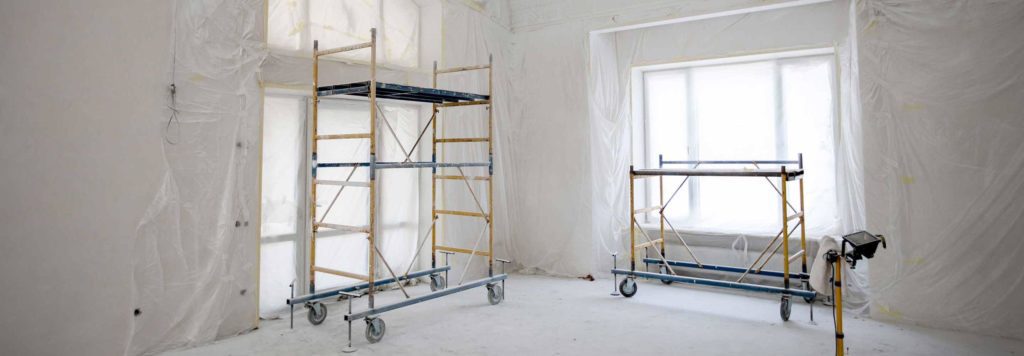Why You Should Be Concerned About the Air You Are Breathing
Indoor air quality (IAQ) has never been more important than it is right now when it comes to the health, well-being, and productivity of your employees, tenants, or clients. A concerning report earlier this month warned that the air quality in parts of the lower mainland is currently equal to smoking five cigarettes a day. This is alarming! The report indicated that the poor air quality is largely due to the increasingly severe wildfire events that have been occurring. So what can be done?
IAQ can be a complex topic, and it’s likely that at one point or another, you’ve found yourself overwhelmed with questions. The first step is educating yourself on the issue. In today’s blog, we will summarize the different types of air pollutants you should be aware of and provide suggestions for optimal air health. Air pollutants such as smoke, ashes, and particulate matter are a great concern to human health, today we will highlight the common pollutants that can be found in the air we breathe: carbon dioxide, TVOCs, and particulate matter.
Carbon Dioxide (CO2)
Carbon dioxide, also known as CO2, is a colourless gas which is continuously released through naturally occurring events as well as manmade activities. Indoor air CO2 concentrations are elevated (compared to the outside air) usually due to the building’s occupants. It is particularly difficult to avoid CO2 as humans naturally exhale CO2 when we breathe. However, it is important to know that high levels of CO2 can impact productivity and cognitive function.The average adult’s breath contains about 35,000 to 50,000 ppm of CO2 (100 times higher than outdoor air). Without adequate ventilation to dilute and remove the CO2 being continuously generated by the occupants, CO2 can accumulate. A high concentration of CO2 and other indoor air pollutants are a source of concern. While levels below 5,000 ppm pose no serious health threat, experience indicates that individuals in schools and offices with elevated CO2 concentrations tend to report drowsiness, lethargy, and a general sense that the air is stale.

Total Volatile Organic Compounds (TVOC)
TVOCs are a class of organic chemicals, including formaldehyde, toluene, and benzene. They are a group of compounds with high vapour pressure and low water solubility. Unfortunately, TVOCs are extremely common in building materials: particle board, glues, paints, and carpet backing. VOCs can cause headaches, rashes, nausea, vomiting, nose bleeding, or eye, nose, and throat irritation. Many VOCs cannot be detected by smell. They are often a prominent source of indoor air pollution affecting occupant health and comfort. Fortunately, there are products on the market that have low or zero VOC contents. We recommend opting for products that are labelled with low or zero VOC as they will be better suitable for our health.
Particulate Matter (PM)
Although many components of polluted air are bad for our health, the most problematic is PM2.5 particles, specifically, those smaller than 2.5 microns. (By comparison, dust and pollen tend to be in the PM10 category, ten microns and under.) These small particles can reach into the deepest (alveolar) portions of the lungs where gas exchange occurs between the air and your bloodstream. The alveolar portion of the lungs has no efficient means of removing PM2.5. When particulates are water-soluble, they can pass directly into the bloodstream, while non-water-soluble particulates remain in the alveolar portion of the lungs. Smoke or polluted air that contains a lot of PM2.5 particles can cause irritation to the eyes, nose, throat, and lungs, and can cause coughing and shortness of breath. PM2.5 (particulate matter) can even long-term health issues including cardiovascular disease and respiratory illnesses such as asthma, lung disease, emphysema, and/or lung cancer. Most PM particles form in the atmosphere as a result of chemical reactions between pollutants.
Understanding the dangers is the first step in changing your indoor air environment. 98% of indoor pollutants are invisible and breathing in particles presents serious health risks. We recommend taking some time to scan your homes and workspaces to increase the quality and safety of your air. Wondering where to start? Start by scheduling regular HVAC maintenance, or by consulting with an IAQ professional to test the air in your space.
Additionally, we can provide you with indoor air quality technology for commercial and residential spaces. Our partners at NBDair can help you find the perfect air monitoring technology for your space so that you can have peace of mind when you breathe. Contact us at [email protected] and we can help you get started and advise you on ways to optimize your health and well-being within the built environment.
Article Written By: Jotveer Pakkar
Article Reference: Air Quality in Lower Mainland | Castanet











